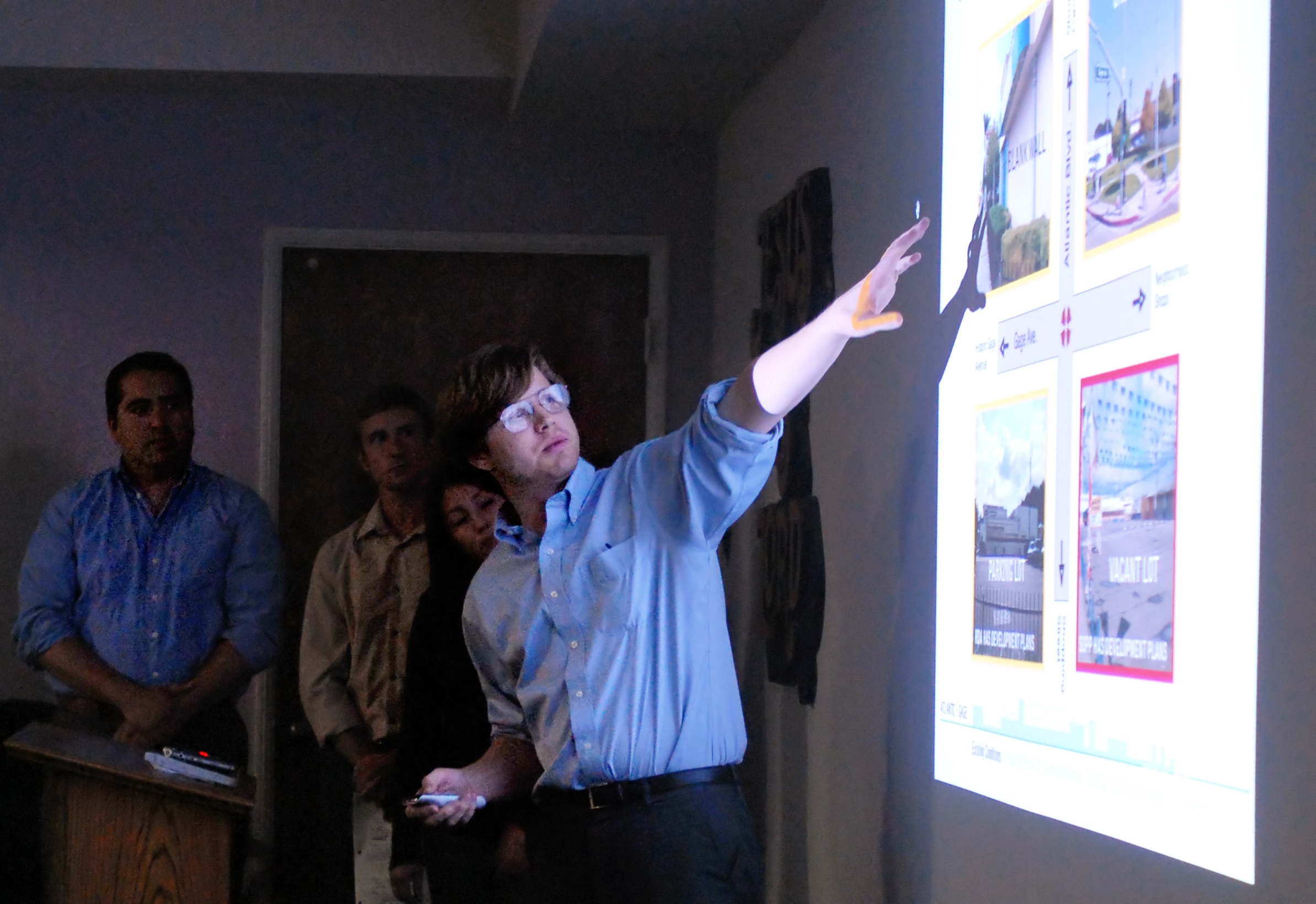BELL “”mdash; Driving into Bell, it isn’t apparent where one town ends and the other begins.
In the midst of the L.A. smog, several blocks of Spanish Revival-style buildings comprise the roughly 37,000-person city, where allegations of corruption have plagued local government since this summer. According to the Los Angeles Times, current and former city officials imposed illegal taxes on residents and took large salaries without authorization.
With this in mind, Vinit Mukhija, a professor of urban planning at UCLA, sent his class of graduate urban planning students to the city as part of an unusual class project.
They were assigned to come up with urban design and physical planning proposals to help improve the town from the ground up.
“(Bell faces) a very broadly framed problem,” Mukhija said. “(Students) have the freedom to go in, do their research and fieldwork, and identify what avenues can be best improved or what aspects of urban life in Bell should be addressed through their proposals.”
As residents fight corruption and change the city government, Mukhija said it would also be useful for the residents to get organized and demand physical changes within their community.
And his class of UCLA urban planning graduate students was there to help. In their quarter-long assignment, students interviewed residents to find out what they like about Bell and why they live there. Their midterm was Thursday, when the class proposed their ideas back to the community at a local church.
Cesar Diaz, an urban planning graduate student, and his group focused on the revitalization of the intersection between Gage and Atlantic avenues.
“The Heart of Bell,” as he called it, is missing any distinguishing features that should be expected from the hub of a city, he said.
His group proposed an architecturally eye-catching structure at one corner of the intersection that could possibly attract a grocery store ““ an amenity the city lacks.
“Once people arrive to this area, they can know they’ve arrived in Bell. And that’s the purpose to this project,” Diaz said.
Another group proposed ideas including a recreation center and community gardens area on Florence Avenue.
Violeta Alvarez, a 30-year resident of Bell, spoke up after the group’s presentation.
“I never thought (an outsider) could turn around and create this vision of Bell,” she said.
Alvarez said later she wished the class’s proposals could appear instantly.
“It’s too bad they don’t have the (magic wand) like Harry Potter,” she said. “It’s amazing to think someone can see Bell in another way.”
At the beginning of the project, some residents were standoffish with the graduate students because of Bell’s recent media attention, said Stephen Sampson, an urban planning graduate student.
“They don’t really want to go on the record or anything,” he said. “They thought we were just here to cover their city in a negative light.”
Once he was able to connect with the community members, Sampson said they were almost taken aback that the students wanted to learn about their city.
“It’s a great synthesis between community and actual intervention,” he said. “Let’s empower them, let’s give them some ideas … for their future area.”
Some community members offered their constructive criticism at the end of each group’s presentations.
Antonio Peña, who owns the El Pollero 95 restaurant in Bell, said he thought the group should present its ideas to business owners as well as homeowners.
Mukhija said ideally, Bell residents will get excited enough to pick up pieces of the students’ proposals, then adapt them into their own plans. The City of Bell has many assets and much to work with, said Kevin Ocubillo, an urban planning graduate student.
“Hopefully, whatever our presentation did, if anything, is (show the community) that Florence Avenue especially is a place that needs and deserves a lot more attention,” Ocubillo said.
